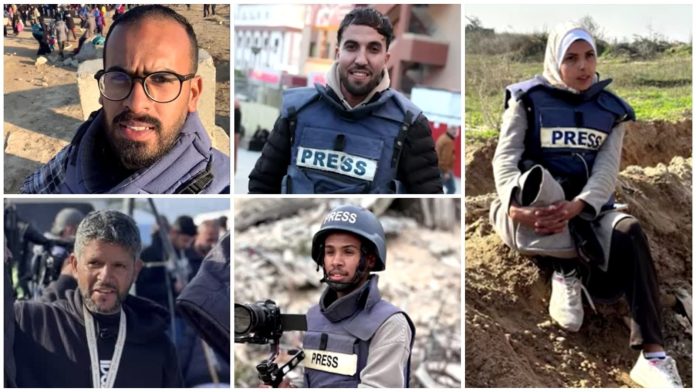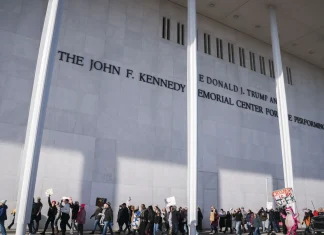
Under the Rubble: The Tragic Toll of a Gaza Hospital Strike and the Silent Sacrifice of Journalists
In the heart of Gaza, where conflict is a daily shadow, a hospital—meant to be a sanctuary—became a pulverized reminder of war’s cruel precision. Nasser Hospital, a beacon of care amid devastation, was struck by Israeli air strikes, leaving at least 20 dead, including five courageous journalists who paid the ultimate price to remind the world of a harsh reality. Their deaths have rippled far beyond the rubble, igniting profound questions about the very nature of conflict, media safety, and human dignity.
The Doctors Who Witnessed Horror
Dr. Ahmed Al Farra, head of the Paediatric and Maternity Department at Nasser Hospital, stood amid the chaos, his voice heavy with disbelief. “What happened was unbelievable,” he told me during a quiet moment of reflection. “These attackers—they know who is where. They knew the journalists were there, working to help, to evacuate. This was no mistake. It was intentional.”
His words cut deeper than any bomb blast. In a place riddled with conflict, targeting a hospital—already a red line under international law—is an act of brutal defiance. And when that attack kills journalists, people who hold power to account and shed light on suffering, the implications become chillingly clear.
“This isn’t sporadic,” Dr. Al Farra added. “It’s planned execution.”
Names etching a legacy
The five journalists killed were more than names boxed in an obituary. They were Mariam Abu Dagga, a freelance journalist for the Associated Press who had recently written her final letter to her 11-year-old son. “She told him not to cry, said she was proud,” shared Mohamed Moaward, Managing Director of Al Jazeera. Then there was Mohammad Salama, the Al Jazeera photojournalist who died rushing to save a colleague struck down while live streaming the attack.
Moaward’s voice cracked as he remembered Salama, “He wasn’t just a cameraman. He was a human being whose first instinct was to protect others—even in the face of mortal danger. He died as he lived: with courage and compassion. He was only two days away from his wedding.”
Journalists: The Brave Witnesses of Gaza
Journalism in Gaza isn’t a profession; it’s a perilous calling. These reporters and photographers traverse the perilous battlefield wielding cameras instead of weapons, their mission to amplify the silent screams. Despite relentless danger, local journalists continue documenting every moment of suffering and resilience, pushing back against the clamor of misinformation and propaganda.
“The loss of these journalists is felt deeply,” Moaward admitted. “Six months ago, fewer than 20 had been killed in this conflict. Now, we’ve surpassed 240 journalists worldwide since the war escalated. It’s a staggering number.”
He emphasized that the press convoy sought safety near the hospital, knowing it was a place of refuge, not a target. “To strike a press convoy in a hospital compound—it’s beyond tragic. It sends a message: that even safe spaces cannot be trusted. How are we supposed to keep telling this story when the storytellers themselves are silenced?”
A call for justice and accountability
Amid grief and anger, the call grows louder for an independent investigation. “We demand accountability,” Moaward insists. “The killings of journalists cannot be brushed aside as collateral. There must be consequences, internationally. The world must see these acts for what they are—a deliberate assault on truth.”
Local voices echo this urgency. “How long are we to remain silent when our protectors, our healers, and our truth bearers are hunted?” pondered Noor, a Gaza resident who attended a candlelight vigil outside the hospital.
Cultural Resonance in a Land of Resilience
Gaza’s history is steeped in resilience, from its olive groves to its vibrant markets. Within this mosaic of life under siege, journalists like Mariam Abu Dagga carved a space for truth. She was known for her unwavering spirit against intimidation, often risking her safety to document the lives of ordinary Palestinians.
Her colleagues remember her as a “voice for the voiceless,” a shining example of fearless coverage amidst the noise of war. Mariam’s last will, which she shared just days before the strike, was a testament to her bravery and love for her family. “She wanted to be remembered not just as a journalist who took risks but as someone who refused to back down despite everything,” Moaward said.
Global Implications: A Warning from Gaza’s Rubble
As we digest these events, the world must grapple with stark questions. What does it say about the protection of journalists in conflict zones when even hospitals are no longer safe? How do we uphold international laws that are meant to shield civilians and the press?
More than a local tragedy, the Nasser Hospital strike embodies a troubling global pattern: the erosion of boundaries in warfare, where civilians and journalists become targets rather than protected witnesses. The consequences transcend Gaza—touching every corner of the globe where truth is under siege.
What responsibility do international institutions bear? Are sanctions and condemnations enough when lives are lost and voices silenced?
The indomitable spirit of storytelling
Despite the rubble and despair, the journalists of Gaza, and those who survive, embody a relentless spirit. They remind us that the need for truth is more urgent than ever. They risk life and limb for the stories that must be told—stories of human suffering, resilience, and hope.
As you read this, imagine the courage it takes to film amid explosions, to listen attentively and report amid chaos, to raise a light in the darkest hour. And then ask yourself, how can the world respond to protect those who risk everything for us to see the truth?
Remembering the Fallen
In the courtyard of Nasser Hospital, the funerals of Hossam Al-Masri, Mohammad Salama, and Mariam Abu Dagga unfolded with sorrow and dignity. Mourners from all walks of life came to pay homage—journalists, doctors, neighbors, and families linked together by grief and admiration.
In their names, in their memory, the quest for accountability intensifies. The story doesn’t end with their deaths; it awakens a global imperative to defend press freedom and human rights in the most dangerous corners of our shared world.
So, dear reader, as you reflect on these lives lost amidst conflict, ask yourself: What price are we willing to accept for truth? How will we ensure those who bring us the stories from the frontlines can do so safely? And how will we honor their sacrifices—not just in words, but in action?









